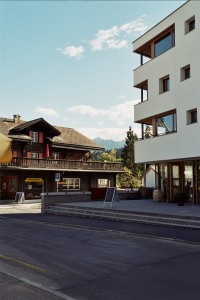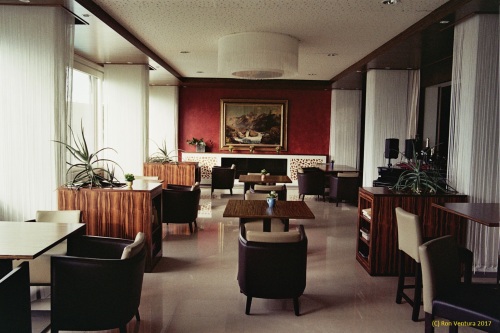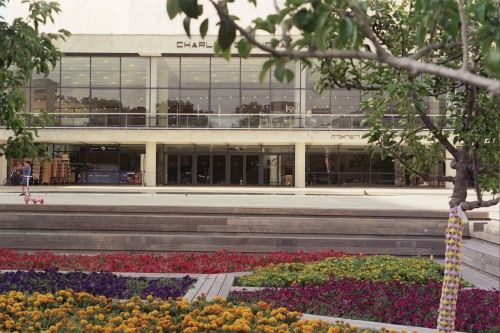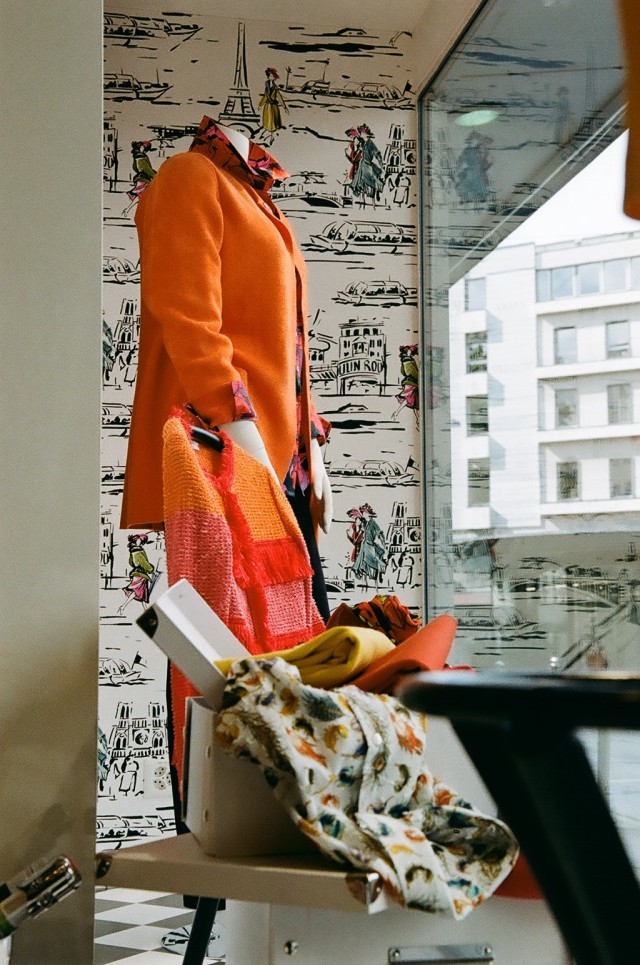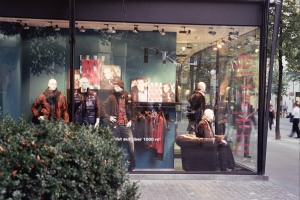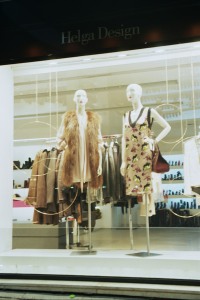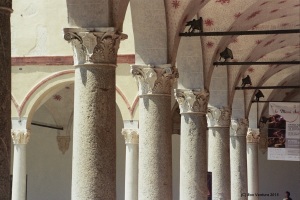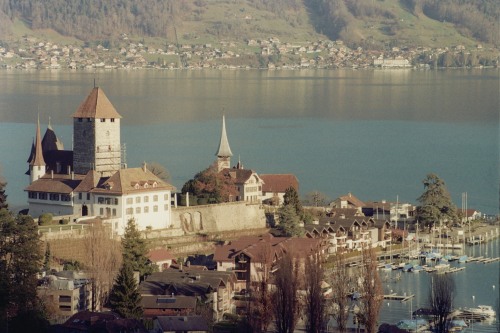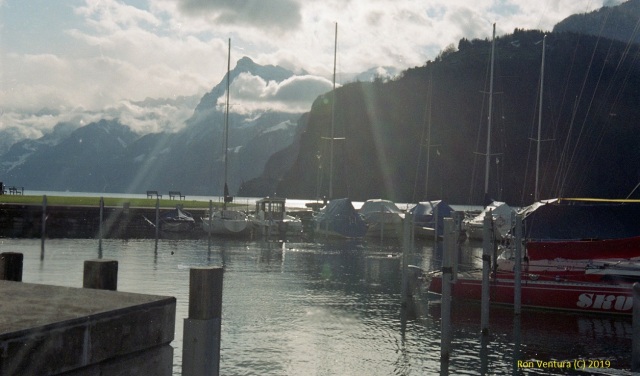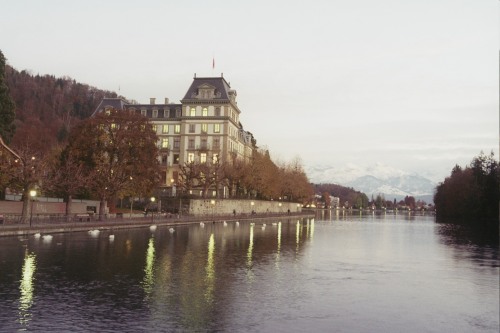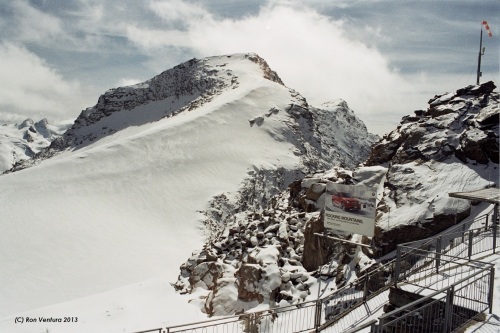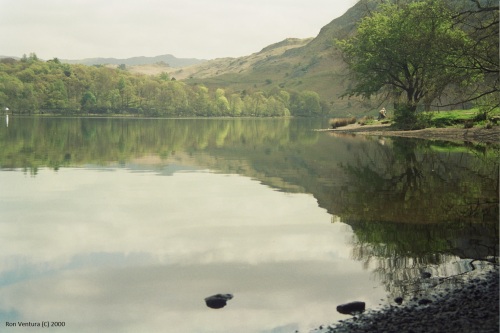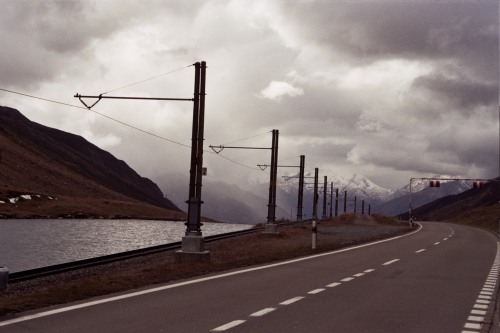A Selection of Photo Images:
- Retail Venues: Stores, Shops, and Shopping Centres
- Architecture and Interior Design
- Nature Landscapes and City Landscapes

This department store constructed a closed-back window display, yet left an opening for a glance into the store for viewers from the street. The front window thus mixes a closed window format (a partial wall) and an open-back format. Visual merchandisers may have easier access this way to arrange the display. But it also requires the interiors to be representable to outside viewers.

A London’s Burberry shop presents another exhibition of hybrid closed-back and open-back window display. In this case the opening is in the centre and the display is against a backdrop of the shop’s interior. An additional interesting feature in this display is the use of fashion model photographs next to mannequins.

Straight lines, right angles — this style of a box-like front window display for a shop was very popular in the 1960s and 1970s. The typeface of the shop name is consistent with that style. It does receive here a more up-to-date look with the lighting and merchandise display. The lobby, leading to the door, is an integral part of this front design.
The façade of this women fashion store (PkZ Women) is window-covered over three floors, giving an impressive and inviting look to the store — especially when the front window exhibitions are lit after darkness. Part of the store’s front is employed on the right side as a screen displaying computer motion-animation. Notice that the display on the second floor above ground level is designed more like an art gallery than a store, with pictures on the back walls, endowing the store with a finer high-class ambience and image.
This artful front window display by a fashion boutique store for women in Zurich (Boutique Marie Claire) presents several delighting features.
First, the warm cheerful colours of garments in red, orange, yellow and pink cannot evade the eye of passers by or visitors of the boutique. The colours are inviting, and they also are a match for the Fall season (on display October 2019), bringing to mind the sight of leaves hanging on trees in Autumn. (Nonetheless, these colours could also be appropriate for re-birth in Spring.)
Second, the sketches on white background of the wall, with touches of (water) colours as in fashion drawings, make a lovely and lively look. From the angle this photo was taken, it creates a particularly eye-catching contrast as backdrop to the garments.
Third, the additional animated garment, and props used in this display, help to create a rather simple yet tasteful scene for a fashion boutique.

The exterior matches the atmospherics of the art-fashioned interiors of the shop.
Notice also the inviting arrangement of wine bottles on barrels as one approaches the shop’s entrance. The shop offers wines from France, Italy, Spain and Switzerland as well as champagne and spirits.
A clean and bright look of a wine boutique shop in Gstaad: white walls, large windows with wooden door and window frames, and a wood-carved signage. Altogether, this fine Swiss style design, frills-free, gives the right feeling of prestige and luxury appropriate for the shop.
Appetising look into Läderach’s confectionary shop: The Swiss chain of Läderach replaces the older confectionary chain of Merkur that it took over in 2013. For its launch Läderach introduced a new line of mini mousses, a real delight of cream and crispy coating in multiple flavours (e.g., classic milk chocolate, classic bitter chocolate, strawberry, mango, orange, tropical). They also offer excellent chocolate pralines, as expected. The view of bustling action in the shop is surely inviting.
The salient feature in this shopping arcade on the Champs Elysées in Paris, that earned it this photo, is the arrangement of lighting bodies hanging from the ceiling. First, they are eye-catching one cannot ignore. Second, nevertheless, they look interesting, a bit unusual in the combination of elements of the fixture. They may even elicit some futuristic (sci-fi) imaginative associations, but that may not fascinate and appeal to every shopper. Thirdly, it seemed to be quite effective in broadly but softly illuminating the arcade. (Note how lamps in the fixtures are directed also to throw light on windows.)
A corner window of a fashion store, with a wing facing the main street and the other wing facing an alley. The male mannequins and photos are placed against a dramatic background of dark tourquise-painted wall for contrast. The white heads of mannequins and light spots accentuate the contrast. A mannequin seated in an armchair appropriately occupies the corner.
The mannequins in the former display as well as in the next two displays have neutral-coloured “clear” heads, having no make-up and wearing no wigs. This symbolic representation rather than natural-looking semblance of people has become more popular in recent years.
The female mannequins in this front window of a fashion shop are shown only from the waist and above — not quite usual or natural a look. They resemble somewhat hand puppets, posted each in this case on a rod. However, the semi-mannequin display helps to focus attention of passing-by viewers to the garments on top.
Hanging rings are added as props, probably for artistic impression (this shop specialises in design brands).
There are certain scenes that seem to be located just in the right place:

This luxury scene of a Versace shop at the Galleria Vittorio Emanuele II in Milano strikes as an excellent case in example. The display in-store viewed from outside fits well with the mosaic floor and decorative walls of the arcade. Note how the mannequins are lifted in the air; their heads conspicuously wear only dark sunglasses for a “cool” look.
Schneider’s confectionary shop in Davos, established a hundred years ago, showcases an elegant integration of classic and modern design. Classic wooden furnishing from Schneider’s earlier days maintains the shop’s legacy in modern contemporary atmospherics. Chocolate and cakes are pleasantly displayed.

In transportation, especially for touristic purposes, aesthetic appeal is also important, and functional as well. Look for example at this Swiss panoramic train that rides in beautiful lake environs surrounded by Alpine mountains: the train is distinguished by its curved lines, large darkened windows, and the elegant contrast between red-bordo and white. Its whole appearance transmits smoothness, dynamics and swift movement. It is also easy to get on and off the train.
And the large windows? They are instrumental for having best wide angle views of water and mountainous landscape.

